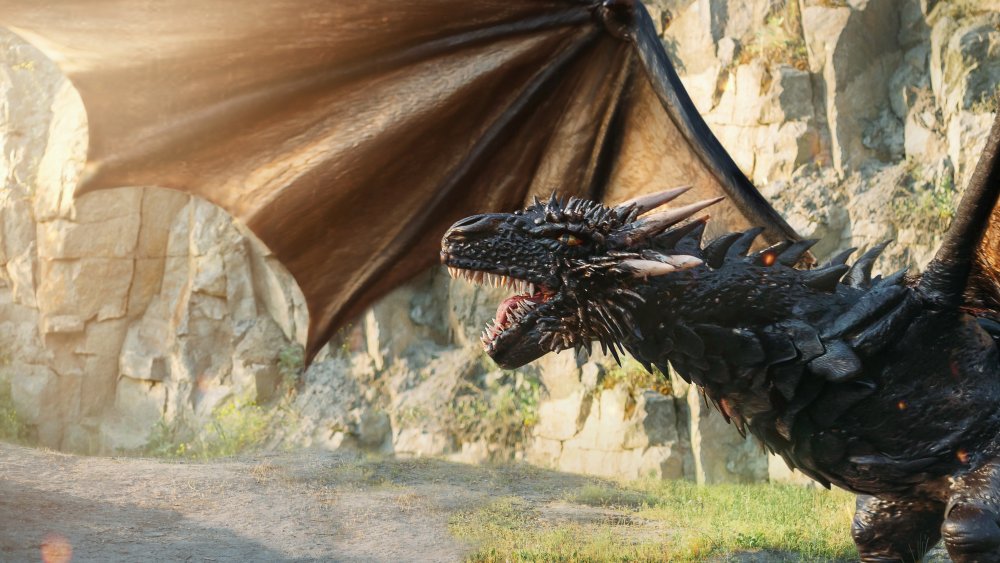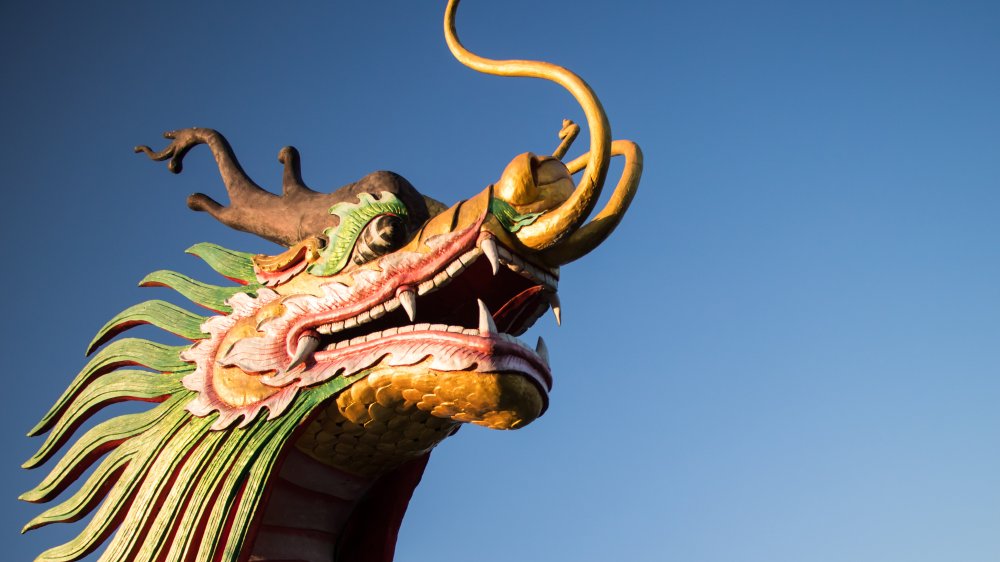The Secret History Of Dragons
Dragons might well be the ultimate fantasy creature. It's almost expected that if something is in the fantasy genre, there should be dragons somewhere. Most cultures have their version of dragons. But where did the idea of dragons even come from?
Dragons most likely came not just from myth, but from hard evidence. Smithsonian Magazine describes how ancient peoples unearthed dinosaur fossils. Since they didn't know what dinosaurs were, they understandably thought these bones came from mythical creatures. In China, an historian from the 4th century BCE mislabeled a set of fossils as dragon bones. Giant lizards and other reptiles also contributed to the idea of dragons.
With these real-life inspirations, it's no wonder dragons feature prominently in different cultures. The earliest known mention of a dragon comes from the Rig Veda, one of the world's oldest texts, per Google Arts and Culture. It tells the story of the serpent-like dragon Vitra who the god Indra had to kill to create Earth. From here, dragon myths began to spread to other countries. Chinese dragons resemble ancient Indian dragons, with their snake-like length — sometimes they have feet, often they don't. European dragons, on the other hand, have wings and present a more beast-like form. Live Science points out that each depiction of dragons adapts to cultural, historical, and literary expectations.
How do you train your dragon?
Before the rise of Christianity, many people believed dragons represented a foe that a hero defeats to get to a treasure. Live Science even explains the word dragon comes from the ancient Greek word draconta, meaning to guard or watch. You know, like Smaug from The Hobbit. In many ancient cultures, heroes had to face a dragon to win some sort of prize.
Time reported that dragons soon morphed, from a beast to conquer into a creature with foresight. Vikings began carving dragons onto boats as a symbol of protection as they sailed to new lands. Dragons started to mean something strong and powerful. But once Christianity started spreading, dragons lost much of their positive association. Stories from around this time portrayed dragons as evil creatures tempting people into danger. This idea became so popular that the most famous dragon story from Christendom is the tale of St. George, who slew a dragon to save a fair maiden, per Project Britain. People were so impressed by his bravery that they converted to Christianity, and George became England's patron saint.
We know that ancient peoples landed on the idea of dragons, and that stories of dragons have been around for centuries. They aren't merely a flight of fancy for fantasy writers, but have figured through legends dating back to the earliest human civilizations.

